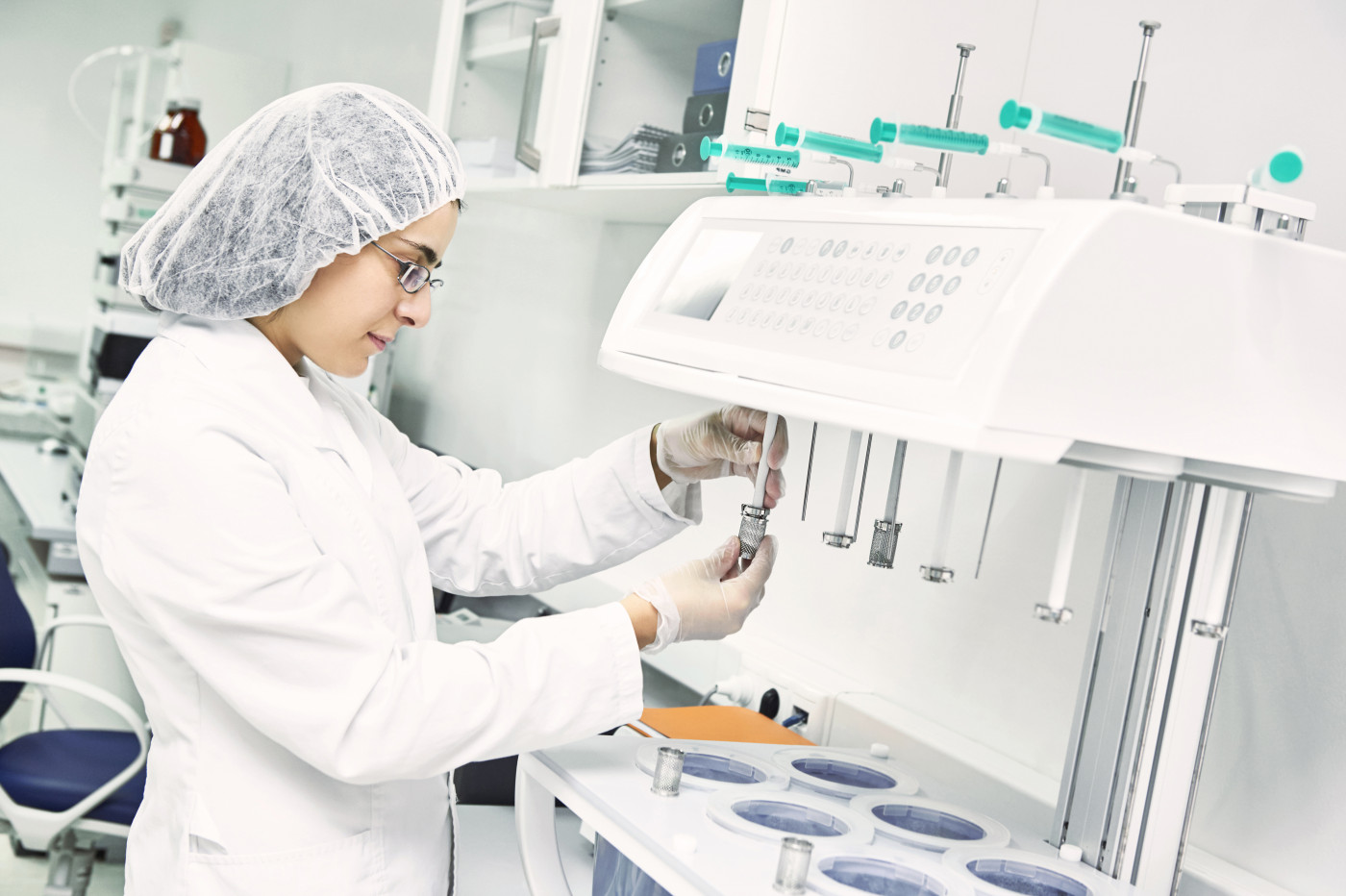Pegylation Provides Long‐acting Version of Dornase Alfa for CF Treatment

A modified version of Pulmozyme (dornase alfa), a widely-used cystic fibrosis (CF) therapy, lasts longer and reduces the need for treatment from once a day to once a week, a study in mice suggests.
The study, “PEGylation of Recombinant Human Deoxyribonuclease I Provides a Long‐Acting Version of the Mucolytic for Patients with Cystic Fibrosis,” was published in the journal Advanced Therapeutics.
Pulmozyme, marketed by Genentech, has been a gold-standard inhaled therapy for CF since it was approved in 1993. This mucolytic agent is a synthetic version of the human deoxyribonuclease I (rhDNase, or dornase alfa), which selectively breaks down long strands of DNA sequences that contribute to mucus thickening in CF.
RhDNase enzyme helps thin the thick lung secretions, resulting in better airway flow, improved ability to cough up and expel mucus, and greater ability to prevent bacterial infections. However, current rhDNase therapy presents limitations and requires daily administration due to its rapid elimination from the body.
A team led by researchers at the Catholic University of Louvain, in Belgium, has developed a pegylated long-acting version of rhDNase that can be delivered once a week, instead of once or twice a day. By reducing the administration frequency of rhDNase, researchers believe patient adherence and therapy outcomes can be improved and that patients will benefit from a better quality of life.
PEGylation is a well-established technology that consists of attaching the strands of the polymer polyethylene glycol (PEG) to molecules to improve the safety and efficiency of therapeutics.
In the study, researchers began by testing how much time rhDNase, conjugated with different-sized PEG molecules, would remain in the lungs of mice.
Results showed that conjugation of rhDNase to PEG prolonged the time the enzyme remained in the lungs, from one to 15 or 20 days after administration. Moreover, the larger the PEG molecule, the more prolonged was rhDNase presence in the lungs.
The team then evaluated the ability of PEG-conjugated rhDNase to cleave DNA after delivery to the lungs to assess if these molecules remained active in the lungs. Pegylated enzymes, recovered from lung tissue, progressively lost part of its mucolytic activity over time. PEG40-rhDNase (rhDNase conjugated with a high molecular weight of 40 kilodaltons of PEG) was the only version that remained as active at day 20 as at the beginning of the experiment.
Researchers then used confocal laser scanning microscopy — an imaging technique that allows the capture of multiple two-dimensional images at different depths — to localize the pegylated conjugates in pulmonary tissue from mice.
Pegylated rhDNase proteins, marked with fluorescent molecules, were clearly visible in lung airspaces. That indicated these molecules are retained mainly within the lung lumen, where they can exert therapeutic mucolytic activity on respiratory secretions, rather than the lung parenchyma.
Next, researchers evaluated the ability of rhDNase to cut DNA and to resolve pulmonary inflammation in beta-ENaC mice, a CF animal model. These genetically engineered mice express an epithelium-sodium channel (ENaC) that regulates lungs’ water content and mucus production. These animals are characterized by airway mucus obstruction and chronic airway inflammation, as typically observed in human CF.
A single dose of PEG30-rhDNase (rhDNase conjugated with PEG 0f 30 kilodaltons) or PEG40-rhDNase was administered to beta-ENaC mice. After five days, its therapeutic efficacy was compared to that of unconjugated rhDNase delivered every day during the same period of time.
Cellular inflammation markers, cytokines (molecules that mediate and regulate immune and inflammatory responses) and DNA were quantified in bronchoalveolar lavage (BAL), a procedure in which a fluid is squirted into a small portion of the lung and then aspirated to be analyzed.
Results showed that one dose of PEG-rhDNase was as effective as one daily dose of unconjugated rhDNase for five days, decreasing DNA content in the mice’s lungs. None of the rhDNase compounds had an impact on cellular inflammation markers or on cytokines in BAL.
Moreover, when PEG-rhDNase was administered once a week over four weeks to beta-ENaC mice, both DNA content and neutrophil (specific immune cells) count decreased (although the latter did not reach statistical significance), indicating a lasting therapeutic effect.
Researchers then tested the stability of pegylated rhDNase in nebulization, a commonly used therapeutic administration. PEG-rhDNase did not aggregate during jet nebulization and maintained its full enzymatic activity. This indicates high physicochemical stability and suggests that nebulization could be considered as a delivery method for potential future clinical application of pegylated rhDNase.
Finally, the team investigated the safety and toxicity profile of pegylated rhDNase simulating both subchronic and chronic exposures in mice. Single or multiple high-dose administrations of pegylated rhDNase for up to three months did not cause any significant lung or systemic toxicity, or accumulation, and was generally well-tolerated in the animals.
Based on the results, the team concluded that “PEGylation of rhDNase may offer a convenient long‐acting mucolytic to patients with CF.”
The team wrote that the data obtained “are promising and pave the way toward future development of PEGylated rhDNase as a long-acting version of the mucolytic with reduced therapy burden for patients with CF.”







